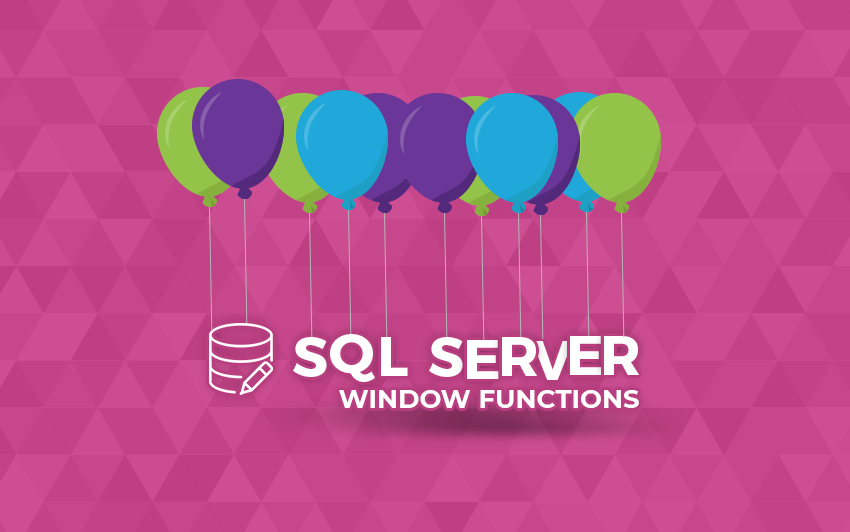Advanced Course
Window Functions in MS SQL Server
Learn how to use analytic T-SQL functions to deeply understand data.
4.81
8,192 learners enrolled
Free trial Yes
Certificate of completion Yes
Time to complete 20 h
Coding challenges 214
Skills you will gain
- Discover the syntax of the OVER() clause
- Learn how to combine OVER() and PARTITION BY
- Reveal how to combine OVER() and ORDER BY
- Learn how to rank rows using RANK, DENSE_RANK, and ROW_NUMBER
- Discover how to create sophisticated window frames using ROWS and RANGE.
- Understand the syntax of the analytic functions LEAD, LAG, FIRST_VALUE, LAST_VALUE, and NTILE.
- Learn how to combine window functions and GROUP BY
- Understand when to use window functions and when to use GROUP BY
- Reveal how window functions in MS SQL Server can be used to build rankings
- Compute running totals and running averages
- Find the best and worst performers
- Investigate trends across time
- Calculate contributions to the whole, such as commission percentages
- Gain a deeper understanding of T-SQL aggregate functions.
Last reviews
Description
Description
T-SQL window functions – also known as windowing functions, OVER functions, or analytic functions – are tremendously useful. These functions make building complex aggregations much simpler. In this step-by-step tutorial, we will lead you through T-SQL window functions. At its end, you'll embrace this topic with ease and feel comfortable using window functions in SQL Server databases.Window functions are so powerful that they serve as a dividing point in time: people talk about SQL Server before window functions and SQL Server after window functions. Because they were introduced into the standard relatively recently, these functions aren't covered in many T-SQL courses.

This course covers the syntax and semantics of T-SQL window functions. It shows how powerful they are, what the typical use cases are, and how to use ORDER BY and PARTITION BY to set up a frame for window functions. You'll also learn the difference between ROWS and RANGE clauses
This course is intended for intermediate users. We assume the user knows the basics of T-SQL, including:
- How to select from a single table, including writing complex WHERE conditions
- How to JOIN tables
- How GROUP BY and HAVING work
What are the requirements?
- A web browser
- Knowledge of basic T-SQL, including JOINs and GROUP BY clauses
What Am I Going to Get from This SQL Course?
In this MS SQL Server course you will learn:
- The syntax of the OVER() clause
- How to combine OVER() and PARTITION BY
- How to combine OVER() and ORDER BY
- How to rank rows using RANK, DENSE_RANK, and ROW_NUMBER
- How to create sophisticated window frames using ROWS and RANGE.
- The syntax of the analytic functions LEAD, LAG, FIRST_VALUE, LAST_VALUE, and NTILE.
- How to combine window functions and GROUP BY
- When to use window functions and when to use GROUP BY
You'll discover how window functions in MS SQL Server can be used to:
- Build rankings
- Compute running totals and running averages
- Find the best and worst performers
- Investigate trends across time
- Calculate contributions to the whole, such as commission percentages
You'll also get a deeper understanding of T-SQL aggregate functions.
Who Should Take This Course?
- Beginning database analysts
- Developers who want to keep their knowledge of SQL Server current
- Students taking classes in relational databases
- Anyone who wants to learn SQL window functions

Table of contents
Course progress 0%
Exercises completed 0/214
-
Introduction
0/8Window functions? We'll explain what they're all about
-
The OVER() clause
0/17Your first encounter with window functions
-
OVER(PARTITION BY)
0/16Discover how to define a function window with PARTITION BY
-
Ranking Functions
0/26Learn how you can rank rows with window functions
-
Window Frame
0/26Learn how to create sophisticated window frames for your window functions
-
Analytic functions
0/28Learn the most essential analytic functions
-
PARTITION BY ORDER BY
0/24Create advanced statistics computed independently for various groups of rows
-
All You Need to Know About Using Window Functions
0/23Do you know when window functions are evaluated in a T-SQL query? Let's find out!
-
Window Functions: The Practice Field
0/31Master all the skills you've acquired so far with our practice set
-
Final quiz
0/15Test all the skills you've acquired so far with this comprehensive final quiz

Get the Certificate of Competency in SQL
This certificate will confirm your practical SQL problem-solving skills
